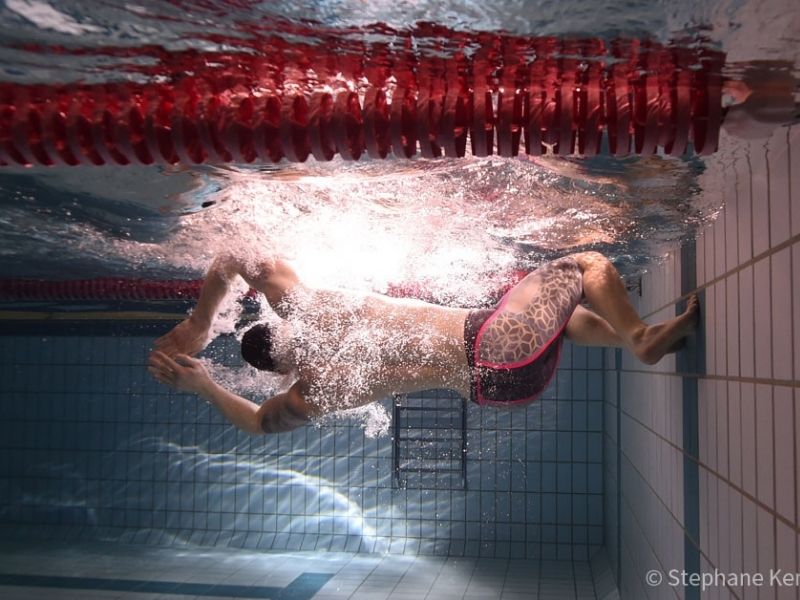The start and turn are vital for any swimmer, whatever their standard. That is why we have decided to give you a few tips to improve both your start and freestyle turn.
The start and turn are vital for any swimmer, whatever their standard. That is why we have decided to give you a few tips to improve both your start and freestyle turn.
There are two types of starts in swimming, the “grab start” and “track start”. For the grab start you place both your feet on the edge of the starting block; for the track start, on the other hand, one foot is placed at the front of the starting block and the other behind it on a small pad ready to push off.
Today we will be looking at the “track start”, which allows a much faster reaction to the start signal. A good dive involves:
- An efficient push off the starting block.
- The best possible entry into the water
- The fastest possible thrust through the water
To achieve all this, you need an excellent set up on the starting block following four key rules
1. Keep your hips up
2. Look downwards
3. Extend your arms perpendicular to the starting block
4. Place your back foot on starting block behind the line of your hips
But not all swimming pools are equipped with the very latest starting blocks (i.e. with a rear pad), so you need to know how to adapt your position to any kind of block. If you are using “conventional” blocks:
– Check your elbows. Since you cannot keep them straight and perpendicular to the starting block, bend them and make sure they are pointing backwards, not outwards.
– Your toes should point forwards.
– Your feet should be just behind your hips and not directly in line with each other.
– Your chest should rest against your thigh.
Now you are almost ready. To make sure you execute a perfect dive, check that right after pushing off:
- Your elbows are thrust forwards followed by your hands; they must not be in front of your face at the “START”.
- Your chin and chest are pushed forwards. Do not push upwards, make sure your shoulders are raised and your back is horizontal.
- Your chest is low and your back flat; this will allow you to push off as powerfully as possible with your real leg.
Try this sequence of drills to learn the proper position. Take up your position on the starting block and…:
1. In the “grab start” position, bend your legs and keep your chest and back flat. With your arms extended and parallel to the water, make sure you are looking downwards and your hips are not too high. Push off the block and focus on how you enter the water.
2. In the same position as described above, move one foot backwards onto the rear pad and raise your hips. Push off and remain focused on the position of your hips and head as you enter the water.
3. Starting from the position referred to above, move your arms backwards bending your elbows. Try to keep a straight back. Push off and try not to raise your body too much as you dive into the water
Now that you have found an ideal starting position, try and improve your turn. Here are 5 things to focus on:
1. You head should follow your hand. You should start to tuck your head down and curl your back while you are making your last stroke.
2. Raise your hips. Curl your head under water, push your shoulders downwards and push off folding your hips upwards as powerfully as possible.
3. Curl your head under water. At the end of your last stroke, immediately rotate your palms downwards, lower your head and curl it underwater to help your body rotate.
4. Keep your knees up at the surface. The biggest mistake is to keep your heels up and bend your knees too quickly, thereby creating huge water resistance.
5. Push off the wall. The thrust technique is the same as when jumping out of the water. Keep your feet level with your hips, steady your upper body and push with your legs right up to your shoulders.
Do not worry if you make even the simplest mistakes at the beginning; that is quite normal. When diving in and turning, your push off the wall will be weak, you will not control your upper body properly and your arm stroke will not be strong enough.
Making mistakes is the only way to improve, so do not give up!
